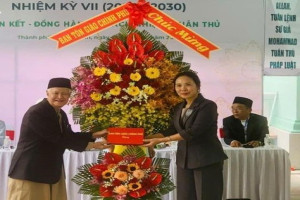
Diwali, or Dipawali, is India's biggest and most important holiday of the year. The festival gets its name from the row (avali) of clay lamps (or deepa) that Indians light outside their homes to symbolize the inner light that protects us from spiritual darkness. This festival is as important to Hindus as the Christmas holiday is to Christians.
Every year, Diwali revelers light up the skies with fireworks and their homes with candles and lamps in celebration of the five-day festival of lights (Nov. 9-13, 2015). It’s celebrated by Hindus, Sikhs and Jains, in countries as diverse as India, Nepal, Sri Lanka, Burma, Mauritius, Réunion, Guyana, Trinidad& Tobago, Suriname, Malaysia, Singapore and Fiji.
Explore some of the most festive customs in this slideshow from around the world.

Shoppers head to Janpath Market on Dhanteras, the first day of Diwali, to buy a lucky trinket; it's believed that if you make purchases on the first day of the festival, you'll have prosperity for the coming year. Dhanteras typically marks the start of the financial year—and a major shopping season—in India.

Vendors sell colored powders at a market in Nepal, where the holiday is called Tihar.

In 2014, the BBC reported that there were about 8 million Hindus living in Pakistan, mostly in the Sindh province. Pictured: The minority community celebrates the festival in Hyderabad

Hyderabad, Pakistan
Lighting sparklers on the eve of Diwali.

Amritsar, India
Indian Sikhs light oil lamps in the state of Punjab.

Amritsar, India
For Sikhs, the festival marks the return of Guru Hargobind Ji, who was freed from prison in 1619.

Gandhinagar, India
The many oil lamps decorating Akshardham Temple will stay lit until Bhai Duj, the fifth and final day of the festival.

Kolkata, India
Fireworks at a park in Kolkata to celebrate Diwali.

Port of Spain, Trinidad
Lamps on sale at a market before Diwali celebrations begin—the Caribbean island nation of Trinidad & Tobago has a large South Asian population.
Source: cntraveler.com




